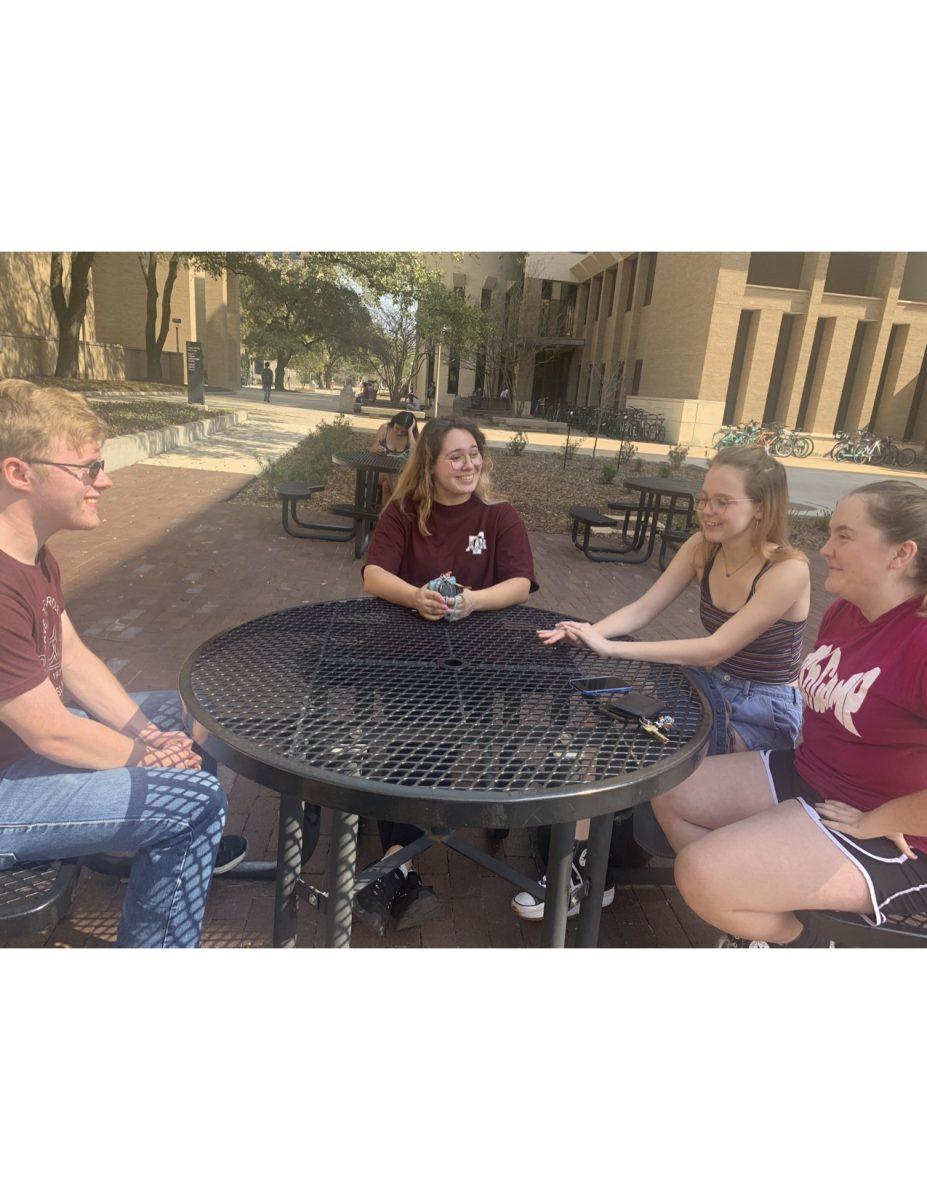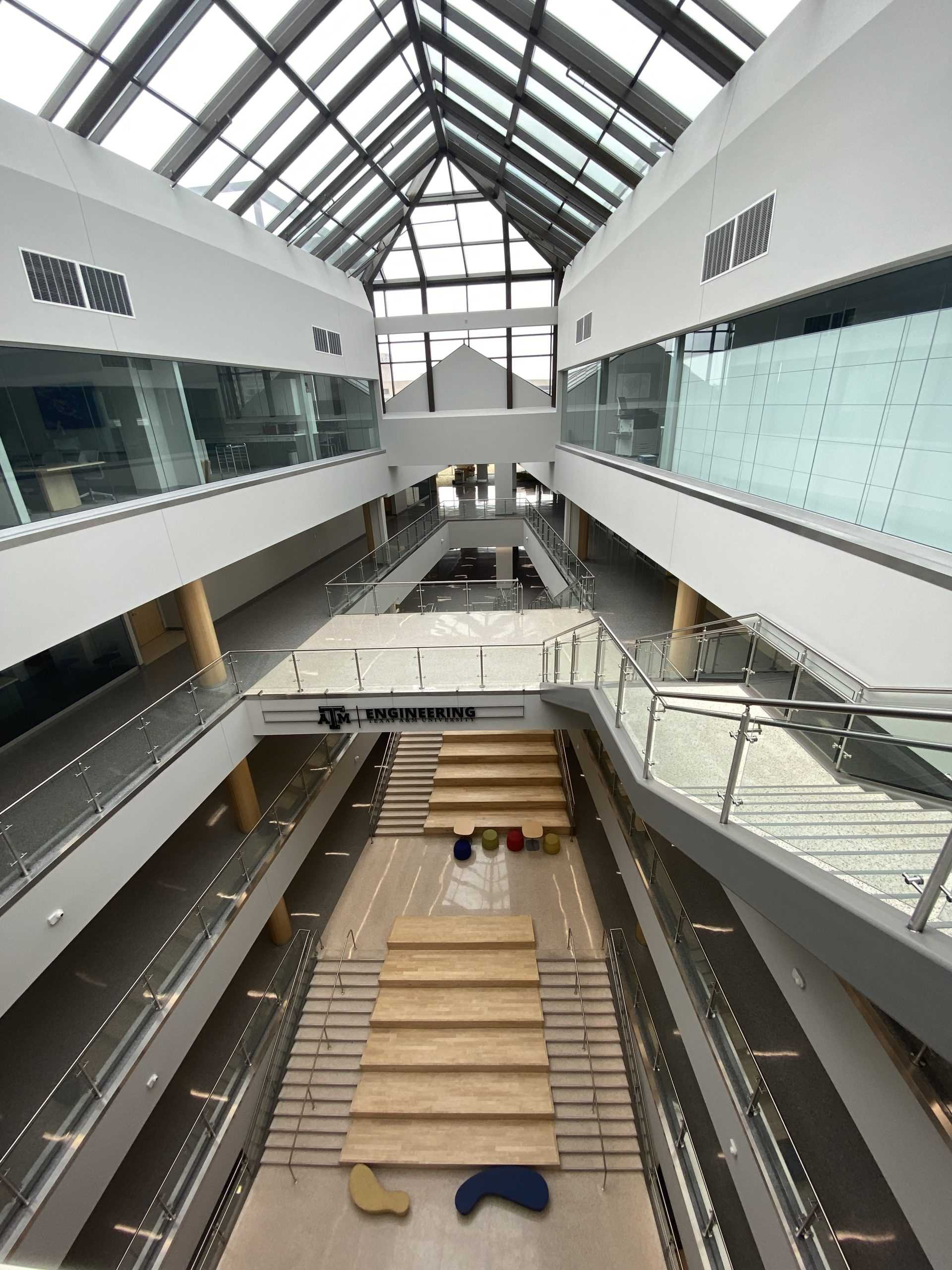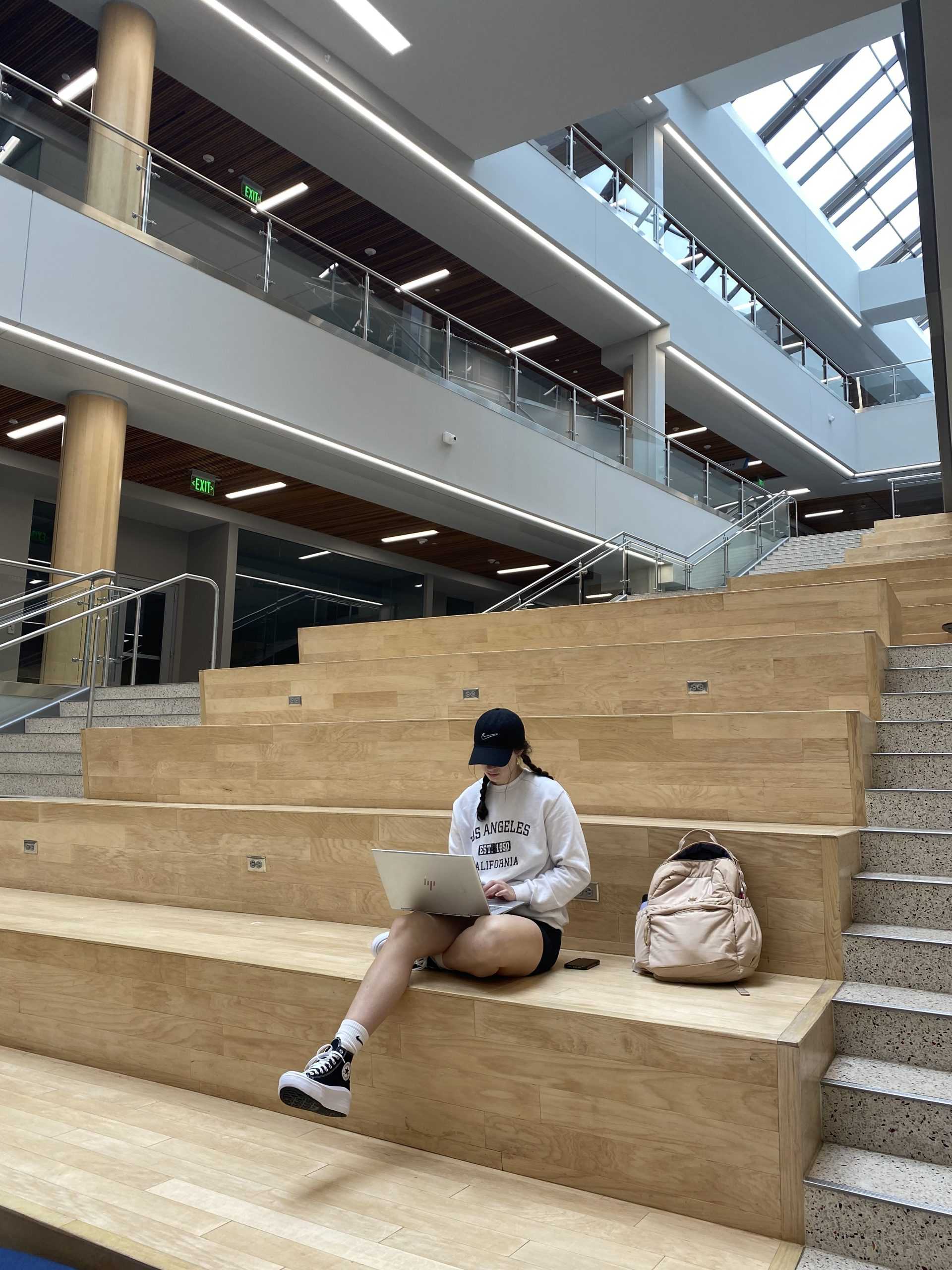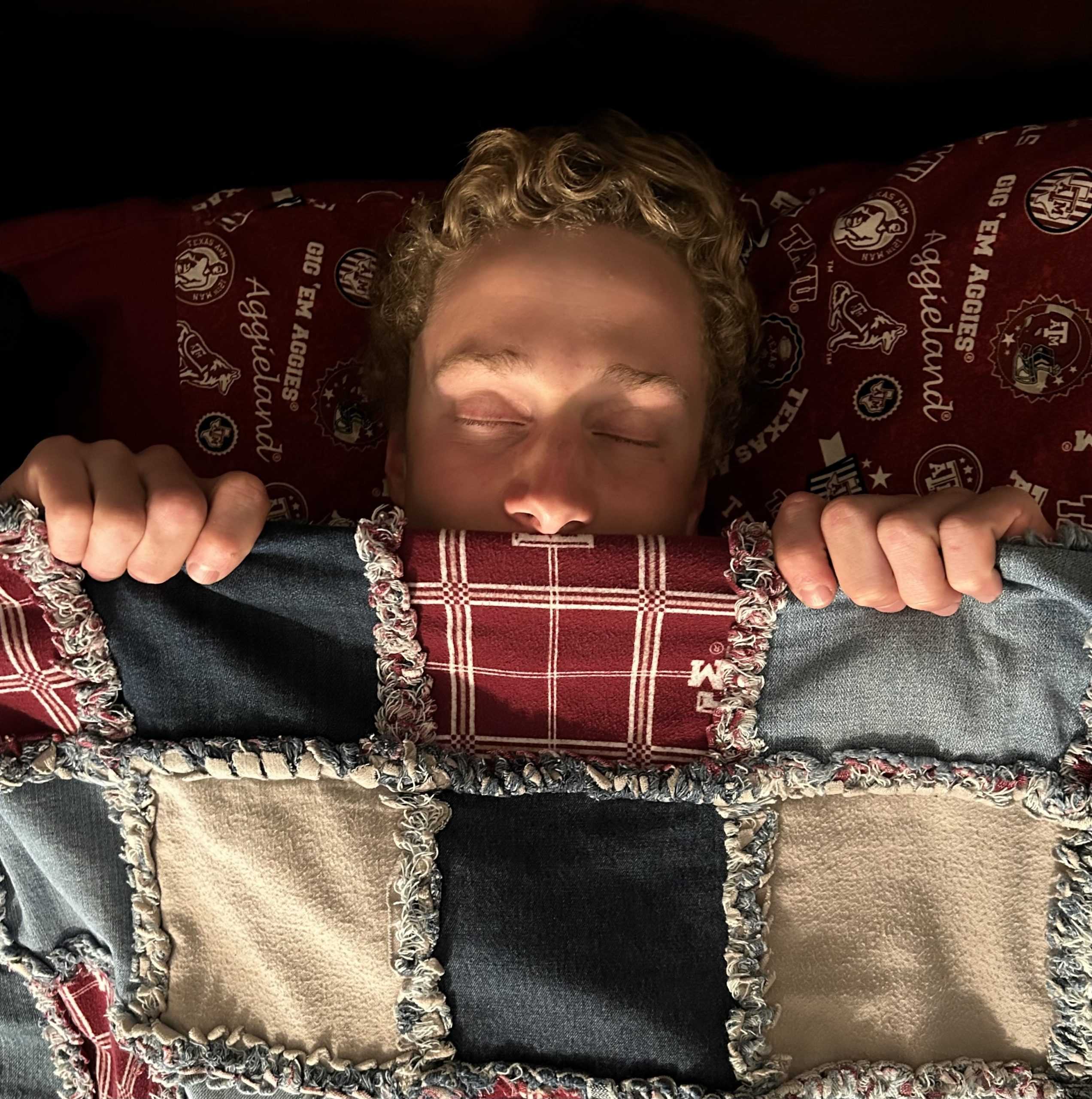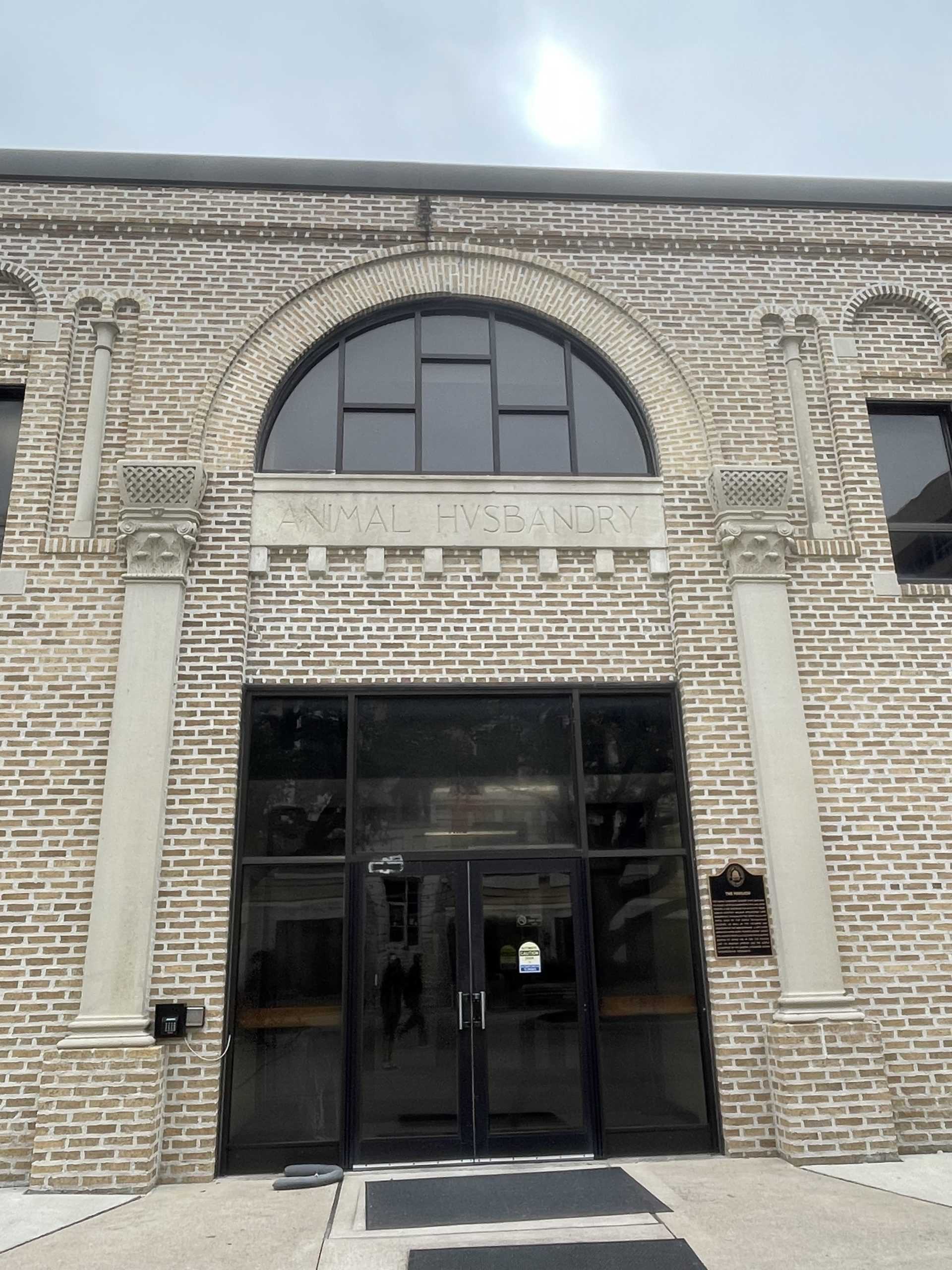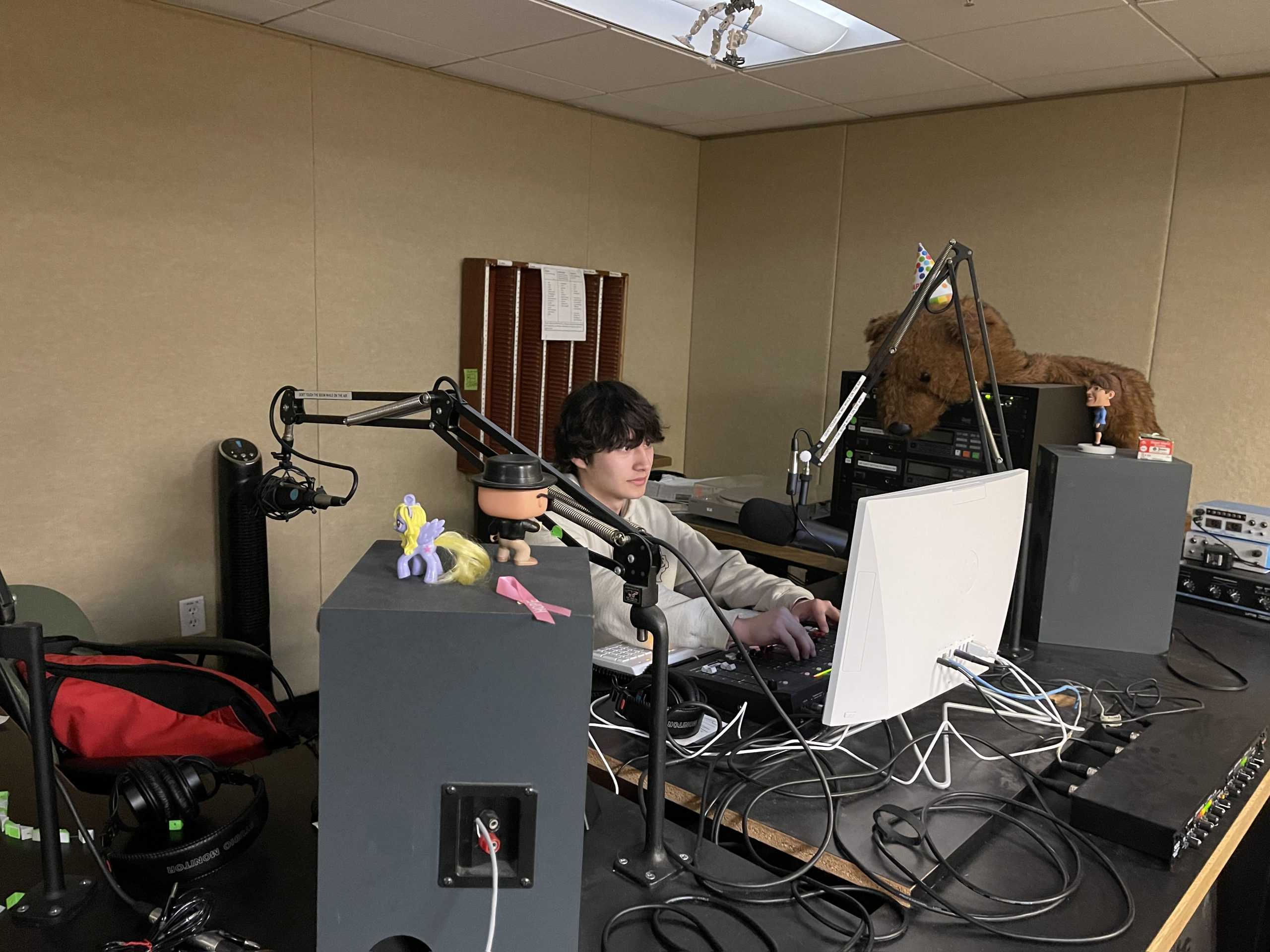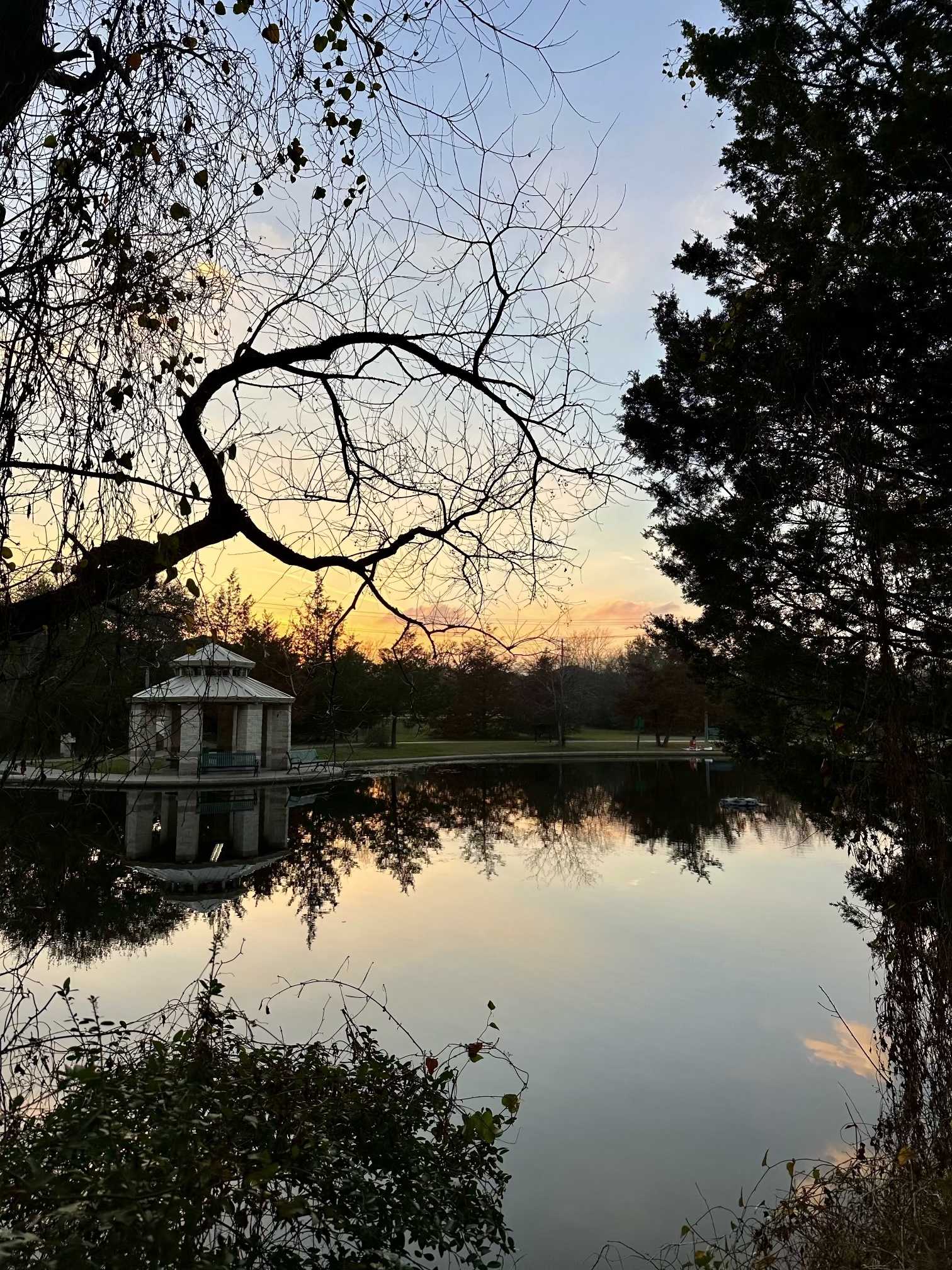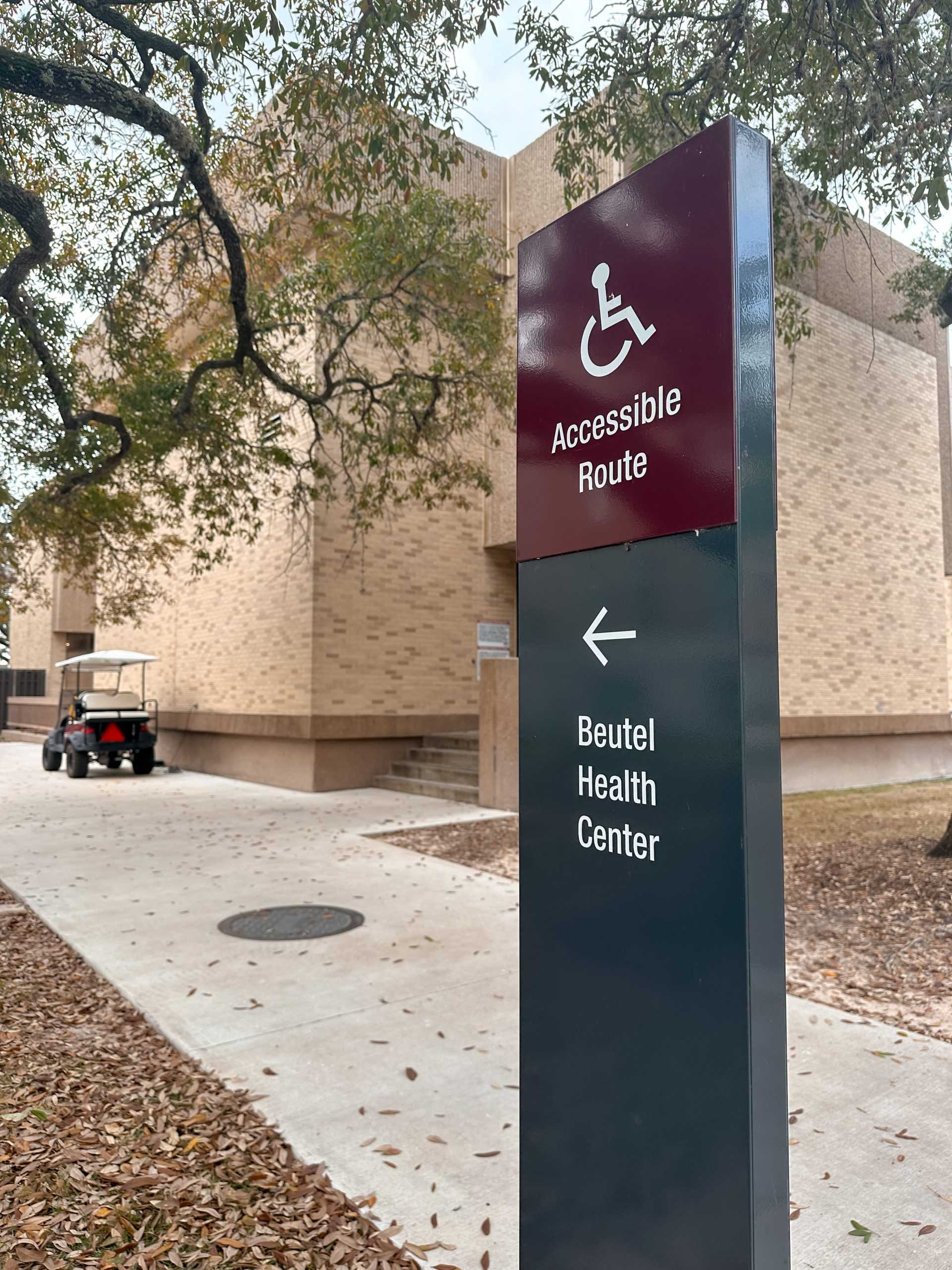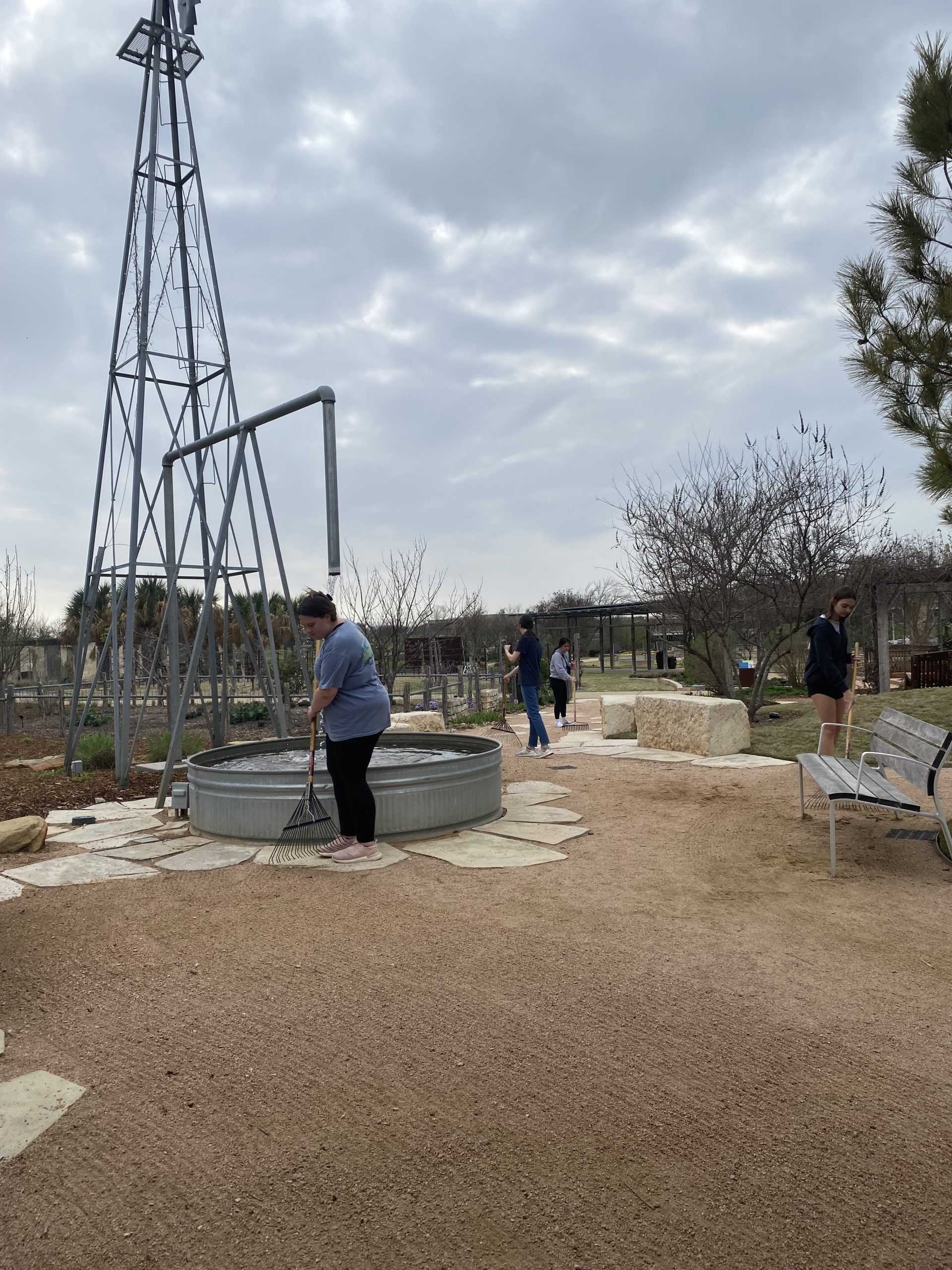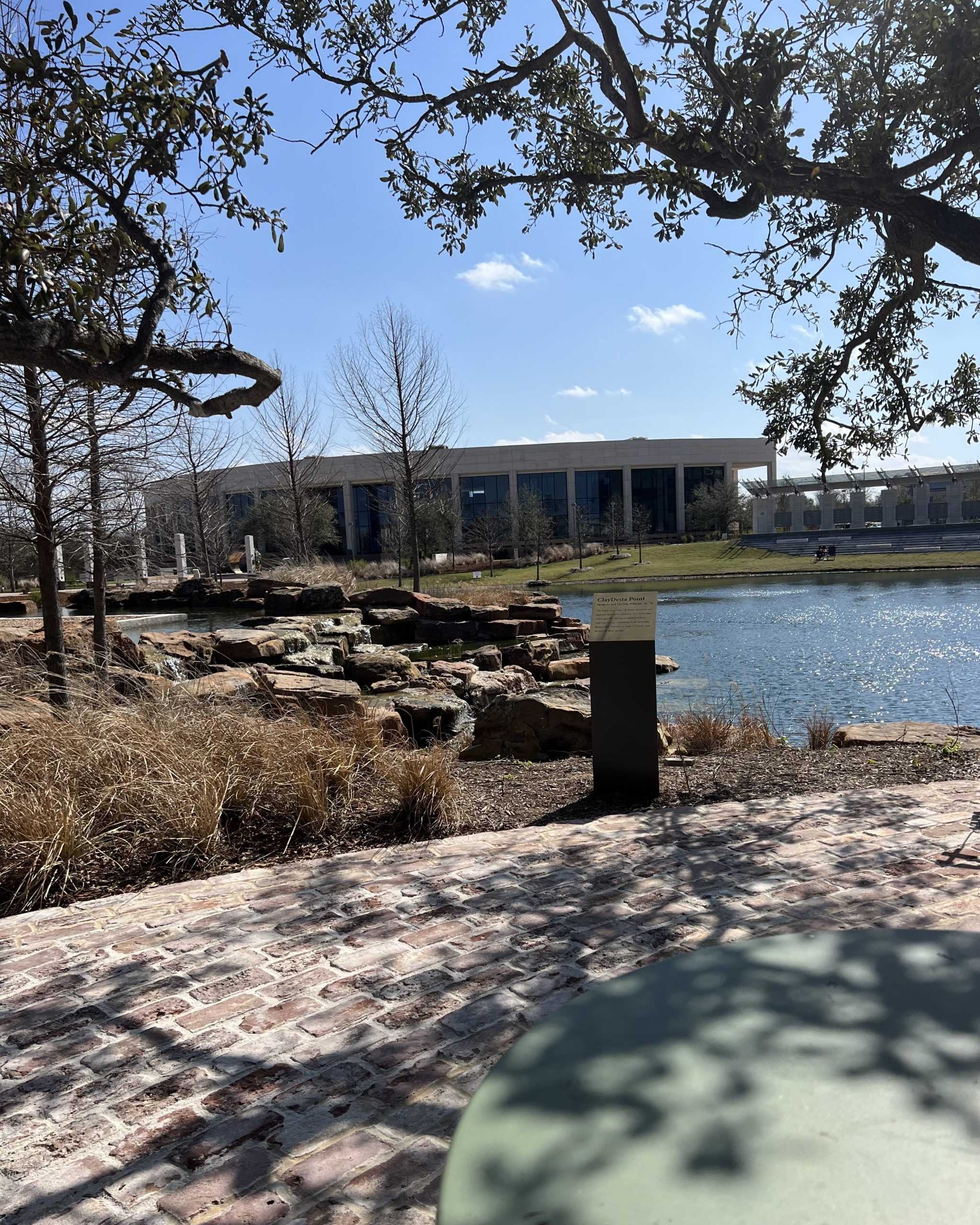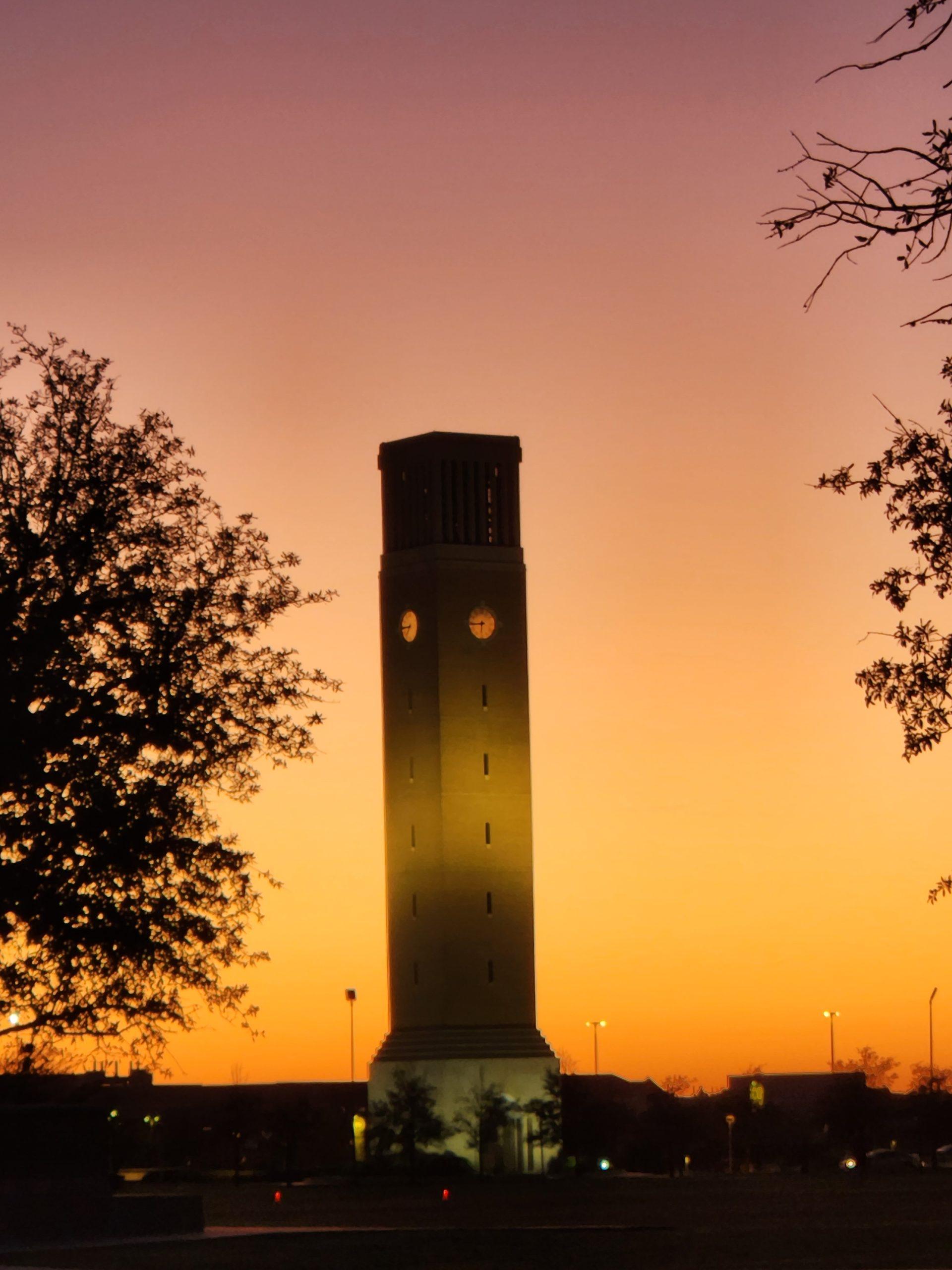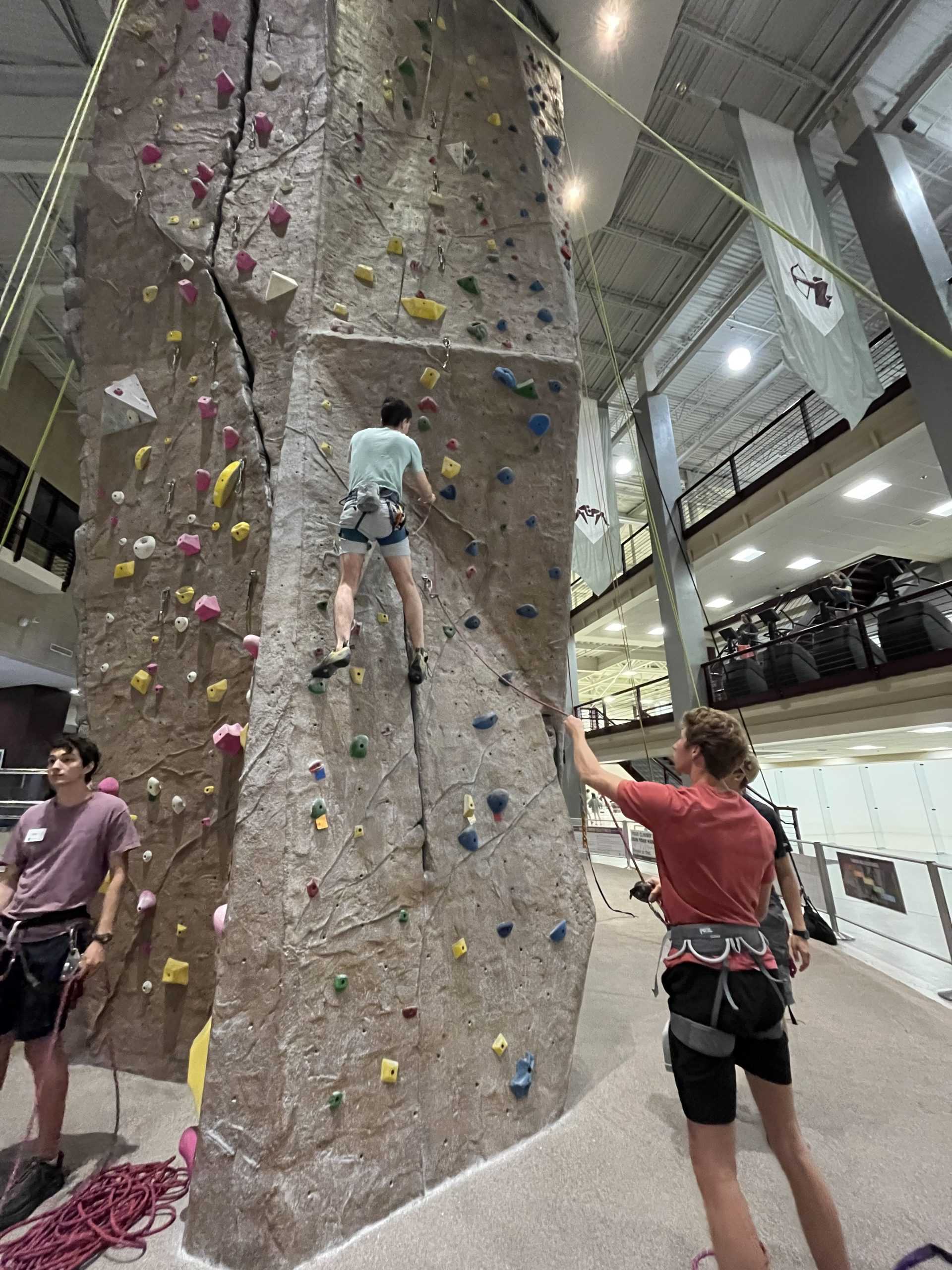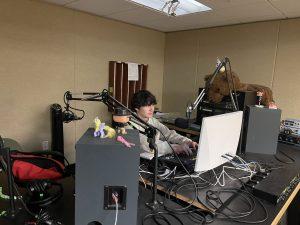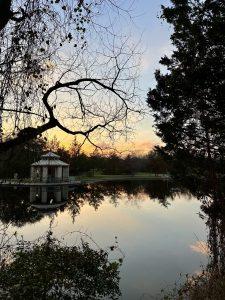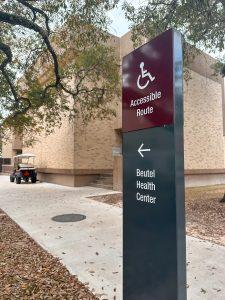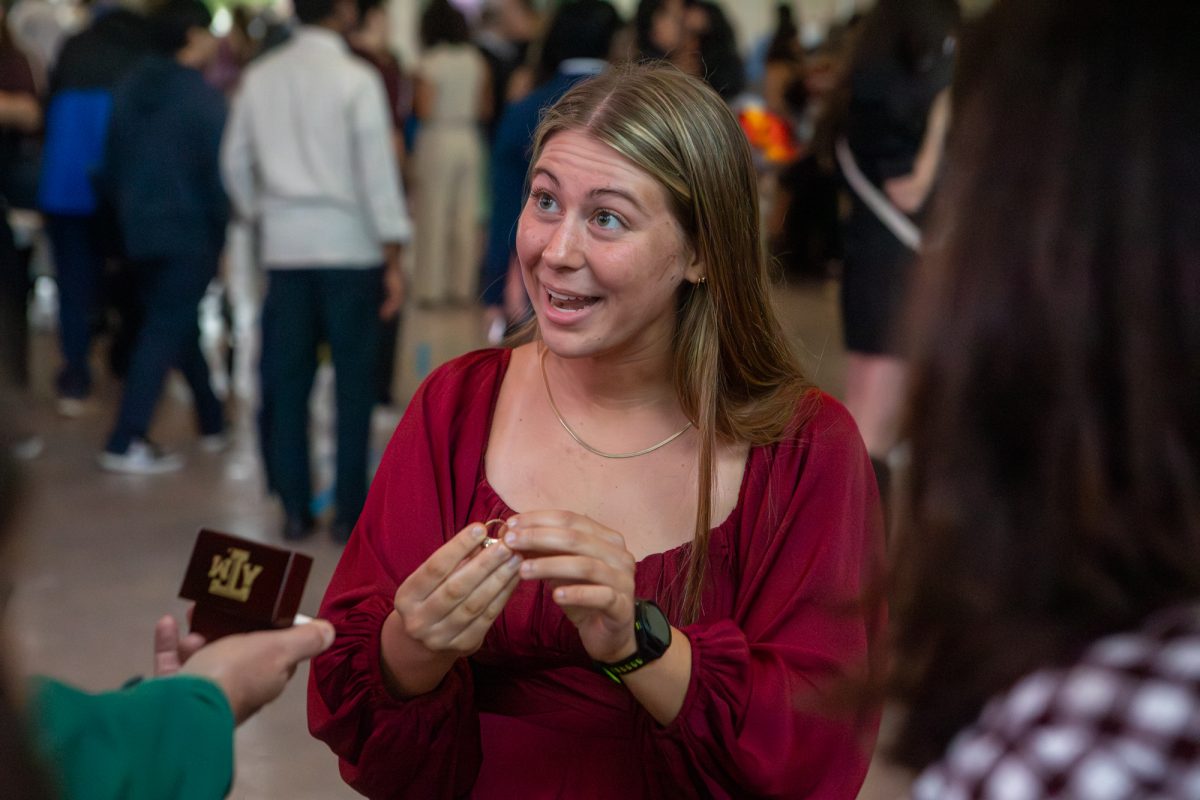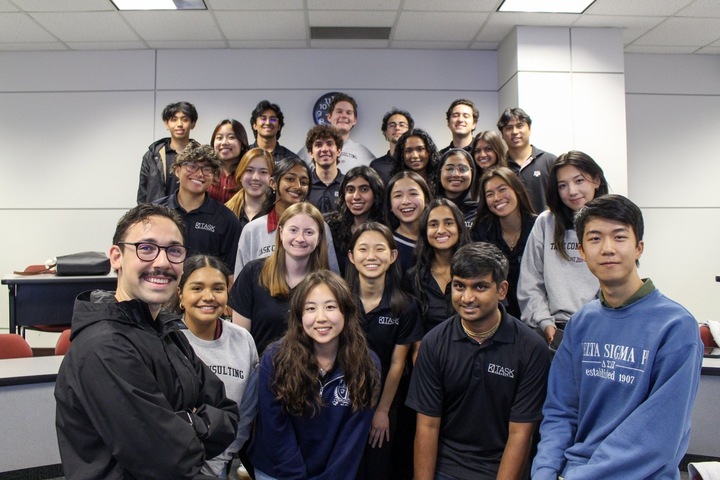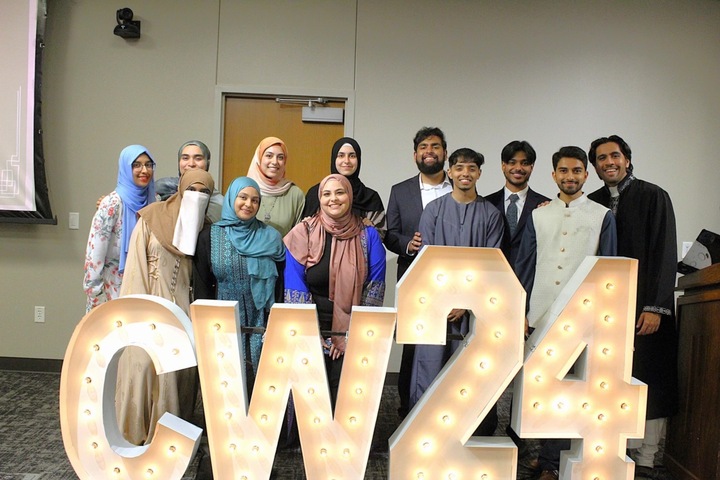Editor’s Note: The “Stress Less” package stories will be uploaded in three parts on Feb. 28, March 1 and March 2.
Most students would say they don’t need experts to explain stress — some might say they are majoring in it.
Students do need to know the path to making good grades is lined with small, easy steps that science has shown to reduce stress, improve sleep, improve nutrition, be happier, feel well … and make better grades.
Just use the page arrows to find a path to wellness.
1. Check in on social wellness
2. Calm by design: Campus spaces built for comfort
3. Sleep like health, happiness and academic success depend on it
4. Creating new green space on campus
5. The art of destressing
6. Off-campus parks provide oasis for anxious students
7. Finding health, school balance
8. Clock out or burn out
9. Apples and oranges: Nutritional wellness at A&M
10. Discover pocket parks, hidden green spaces
11. Music has power to relax stressed minds
12. Time management: Breaking down stress
13. Green space immersion improves well-being
14. Fur Flash: Animals benefit mental health
15. Physical activity: living well on campus
The “Stress Less” package was contributed by the course JOUR 203, Media Writing I to The Battalion.
Checking in on social wellness
By Ashley Acuna, JOUR203 contributor
Stress can be paralyzing and studies show students may isolate themselves during high-stress times such as exam periods.
According to a 2020 survey by Boston University, two-thirds of college students reported feeling isolated and lonely. Even otherwise healthy people can develop mental and physical health problems when socially isolated, according to a NIH study.
Texas A&M helps create paths for students to make connections and meet others through student programs and organizations at the Memorial Student Center, or MSC. With over 1,000 organizations listed on TAMU Student Activities, there are a range of recreational, professional, religious and other affinity groups for students to choose among. Members of the MSC Hospitality committee said the group is dedicated to connecting students with other students.
“Even though we come from different backgrounds or different stories, we all come together because we have that one thing in common that brought us to the specific organization or that specific part of the MSC,” public health junior Abby Alquiza said, chair of MSC Hospitality. “[It’s about] having someone there who has the same beliefs as you and shares the same things you are going through.”
Almost half of adults report they have nobody to talk to when they need help, according to a 2020 Centers for Disease Control and Prevention data brief, which estimated 47% of adults are without social support.
To meet new people and join a community A&M offers clubs as diverse as Swaram A Cappella, Engineering Mentorship Council, Tabletop Troupe, Venezuelan Student Association, A.M. Prayer, Aggies for Limbs and the PB&J Project, according to StuAct.
Accounting junior and vice chair for MSC Hospitality Nathan Matous said because the MSC organizations have a space that they all utilize, it provides an opportunity to meet other people.
“Within the MSC there are over 19 different committees and some of them range from leadership focus committees and service organizations like MSC Hospitality,” Matous said. “You are able to join a committee that caters more towards your interest.”
People ages 15 through 29 showed a high rate of no companionship compared to older populations, according to a 2016 study by BMC Public Health.
Talking and interacting with others positively affects brain function and physical health, which means people need good routines for well-being, according to a 2010 National Institutes of Health journal.
Having an open mind to meet new people can prevent quick judgments from having no social capital and it creates a chance to make a friend, according to a 2021 article by Just Mind. People who have common purposes and similar interests contribute to a stronger social tie with each other, according to a 2013 study about well-being by the World Wide Web journal.
Calm by design: Campus spaces built for comfort
By Hannah Bradicich, JOUR203 contributor
Of all ways to manage stress, one of the easiest may be walking to a new place where stress relief is built into the architecture.
From the sunlit-cast learning stairs in Zachry Engineering Education Complex to the calming environment of the Memorial Student Center Flag Room, students may notice increased productivity and a better mood in certain spaces, according to a study on the effects of natural light. Architecture can have a direct effect on how people interact, and is even being researched by professors at Texas A&M, to see how spaces can be designed to restore focus and attention.
For overall wellness, architects can incorporate nature into architectural features, A&M professor of architecture Xuemei Zhu said. In addition to her current research, Zhu has a doctorate in architecture and has extensively researched how design can promote wellness. When students build up mental fatigue, it’s very difficult to focus, said Zhu.
“We have seen in many studies when we talk about why nature is beneficial for our health that it has a stress reduction effect,” Zhu said. “On the other hand, it has what we call attention restoration … For students who deal with stress and distraction daily, whether it’s deadlines, finances or other aspects of life, being exposed to nature daily would have a massive effect on their mental health.”
Researchers in a National Institutes of Health study found that exposure to natural light has a direct effect on mood regulation and sleep — playing major roles in both focus and recollection.
Light controls humans’ circadian rhythms, which is defined as the natural cycle of changes experienced by humans during a 24-hour period. Too little natural light throws off this cycle and negatively affects cognitive function, so when seeking better knowledge retention, it is advisable to relocate to a study space like the learning stairs that has ample amounts of sunshine, according to the study.
Campus design can promote this idea, Zhu said, through indoor greenery, study spaces with views overlooking the outdoors and the use of natural building materials. Some of her personal favorites include the newly added Aggie Park across from Kyle Field and The Gardens on West Campus.
“The term we use in design is biophilic design,” Zhu said. “The idea of biophilia is the concept that we, as human beings, are genetically wired to connect with nature, because that’s where we came from, right? If we could integrate some of those kinds of connections into our design space, everyone — students, staff and faculty — would all really benefit from it.”
The concept of biophilic design doesn’t necessarily have to start on a large scale, Zhu said. It could be as simple as using natural wood rather than steel surfaces, which could explain the comfortable, welcoming feel of the MSC Flag Room, the beloved “living room” of A&M.
“The most amazing thing about the science behind the effects of architectural design on wellness is longevity,” Zhu said. “The impact of design is long-lasting.”
Sleep like health, happiness, academic success depend on it
By Jonathan Chung, JOUR203 contributor
Students often sacrifice sleep in favor of tests and life, but the science is clear — sleep improves mental, physical health and grades.
Based on a survey done by the American College Health Assessment in 2015, 21% of A&M students cited lack of sleep as something that has affected their academic performance in the last 12 months.
Sleep quality, duration and consistency are all associated with better grades for college students and accounted for nearly 25% of the differences in grades and test scores, according to a study published in the NPJ Science of Learning.
The amount of sleep that is needed to maintain wellness varies with age, David J. Earnest, Ph.D, said, a neuroscience and experimental therapeutics professor with an interest in circadian rhythm.
“Particularly adolescence through college age, you typically need about 7 to 8 hours asleep,” Earnest said. “Not getting good sleep, or at least some sleep is obviously gonna affect you, you know, not only your mental health, it’s also associated with increased anxiety.”
Healthy sleep habits can play a large role in how college students cope with anxiety, depression and other traumatic life events, according to a study published in The Journal of American College Health.
Instead of staying up late and pulling an all-nighter, students may be better off opting for a more regular sleep schedule, Earnest said. Avoiding caffeine, blue light from smartphones and electronic devices before bed, and not eating foods high in sugar or fat before bed are all things that can help create a sleep-conducive environment. Altogether, these factors can help students get the amount of sleep that they need, Earnest said.
“All of these things kind of contribute to basically maintaining stable sleep-wake rhythms, both in terms of the pattern, as to when you’re going to bed, but also just helping you get the duration of sleep,” Earnest said.
For more information about how to sleep for health, visit the CAPS website or the Health Promotion website.
Creating new green space on campus
By Emelia Gamez, JOUR203 contributor
Students at Texas A&M have the power to not only use the available green spaces, but to make green spaces of their own through grants from the A&M Office of Sustainability.
The Office of Sustainability works with university architects to bring more green space and connectivity to campus, according to their website. One project is the student-run Aggie Green Fund, which reviews applications and makes yearly financial grants to campus groups who have proposed new green spaces or sustainability projects they want on campus.
The Office of Sustainability supports students through education and resources and advocating for sustainability, according to their website. With a master plan and sustainability master plan, the office works to make the campus environment better for students, said Ben Kalscheur, assistant manager at the Office of Sustainability.
“What the idea is, is how can we have more green spaces on campus,” Kalscheur said. “Basically, how do we connect things more, make campus more walkable and make it more of an enjoyable experience, while you are on campus going from class to class.”
Green space on Northside Housing and re-envisioning Haney Drill Field for better public usage are two proposed projects, according to the Campus Master Plan, as well as moving some surface lot parking off the main campus.
Students, faculty and staff can apply for major grants and micro-grants as part of the Aggie Green Fund. They have given out $2.2 million in grants for over 100 projects since 2011, according to their website.
“When you are looking at green spaces, the Aggie Green Fund is definitely a great opportunity that you can utilize to help increase green spaces on campus,” Kalscheur said.
In 2022, the Aggie Green fund awarded $55,682 for green space at the School of Public Health, according to the Aggie Green Fund website. The green space is aimed at encouraging a healthy lifestyle with walking trails and outdoor seating surrounded by gardens. Also in 2022, $30,149 for a gravel garden between Hullabaloo and Schumacher Hall. It will include hammock stands, tables, chairs and benches, according to the Aggie Green Fund website.
“You can make your project come to life at Texas A&M and it could be something that could be here permanently, for at least a very long period of time,” said Kalscheur. “You would be making a difference.”
The art of destressing
By Mitchell Hasenpflug, JOUR203 contributor
From improv to painting, science confirms the arts are a fun way for students to find stress relief.
Creative activities that demand focus can be powerful tools to relax and release pent-up stress, said Texas A&M performance studies lecturer Anne Quackenbush. From classes to student organizations, visual to performance art, there are many ways for students to engage with art to relax, noted Quackenbush, who teaches PERF 200, Introduction to World Theater, and PERF 301, Performance in World Cultures. A recent study reported 85% of college students said they felt overwhelmed by the large volume of their responsibilities.
Quackenbush cautioned that students need to avoid turning their stress relief into a new source of stress. In the case of Quackenbush’s class, she said the first order of business is to have fun.
“One of the first things I do is say we are going to have fun,” Quackenbush said. “We are going to play games. These games have a purpose and that purpose is to bond us together, to understand that it’s ok to make mistakes [and] that everybody makes mistakes.”
She cautions there are pitfalls to using art as a method to destress.
“The minute it becomes an assignment it takes on a completely different aspect,” Quackenbush said.
Student organizations are a great way to find like-minded people and try out a form of art that might be of interest, Quackenbush said.
There’s a wide variety of student orgs here at A&M, and Quackenbush said this allows students to connect with art that is meaningful to them.
Aggie ACHIEVE, a comprehensive transition program for young adults with intellectual and developmental disabilities, uses improv classes to help teach life skills in a fun and engaging way.
Students looking to try out improv can find a welcoming community in the Freudian Slip Improv Troupe, a student organization that performs shows and workshops on campus.
Theater and performance are ways to “practice life,” to rehearse difficult situations and to express trauma, Quackenbush said.
“Allowing people to step away from the stressful life and to step into being a child, to step into tapping into your imagination, to step into a world where time flies and you’re going to be laughing,” Quackenbush said. “If I had a dime for every student who came in and said ‘Oh I’ve been waiting for this, this part of my day makes everything OK.’”
Off-campus parks provide oasis for anxious students
By Mary Howard, JOUR203 contributor
A walk in the woods with friends lowers stress and makes people happier, according to a study published by the National Library of Medicine.
Bryan-College Station offers thousands of acres of park green spaces to explore, most within only a few miles of campus. With over 100 parks between the two cities, both city parks departments offer weekly events and recreational activities open to students.
When the weather is warm, people fill the parks running, walking dogs and playing games, said Rae Huges, staff assistant for College Station Parks & Recreation Department.
“Wolf Pen Creek is the most popular of our parks for students by far,” Hughes said. “There are a lot of fun events we have, including Movies in the Park, and Food Truck Wednesdays.”
In addition to screening “A Bug’s Life” for movie night on March 28, the nationally recognized parks department hosts many other spring events, including a monarch butterfly hike through the 516-acre Lick Creek Park. For more information, visit cstx.gov.
Going to a park and getting fresh air for a study break always seems to reduce stress about exams, engineering sophomore Hannah Bates said.
“I do not know the science behind it, but just being outside in nature was so much more calming than sitting in a musty building on campus,” Bates said while taking a sunset walk in John Crompton Park.
Research by the Healthy Parks Healthy People program examined stress levels of individuals before and after a couple of hours spent in a park.
Nature walks with groups of people decreased participants’ stress, and individuals admitted being happier by 14%, according to the results found in the National Library of Medicine, and the combination of being around other human beings and being in a natural environment relaxed previously stressed individuals.
The City of Bryan lists over 50 parks with different amenities in addition to 20 miles of trails. Lake Bryan offers paddleboarding, fishing and swimming, according to Destination Bryan. Students can also find a retreat at the almost 2,000 acres of park green space in College Station.
Finding health, school balance
By Laura McClintock, JOUR203 contributor
Stressed students tend to place their overall health and well-being on the backburner when it comes to academics, research shows.
Students create a culture that prioritizes school and social lives over general health on college campuses, according to research published by SAGE Open. Although often overlooked as a resource, the director of Student Health Services said students will find a wealth of resources ranging from nutrition to sleep for students to doctor visits to get healthy and stay healthy when sick.
Ignoring illnesses and avoiding care is most prevalent in young adults aged 18 to 24 and those with other underlying health conditions, especially due to COVID-19 concerns, according to the Centers for Disease Control and Prevention. This increases the morbidity rate, or number of deaths associated with common sicknesses, that are usually preventable and treatable, according to the CDC.
Dr. Martha Dannenbaum, physician and senior director for University Health Services, said the A.P. Beutel Health Center provides primary care and specialty medical care, at their facility located across from Sbisa Dining Hall.
“We don’t want to believe it when we are 18, 19, 20, because there is too much of life going on, and we think we can do it all,” Dannenbaum said. “We feel like we have to stay up until 2 a.m. to study for something or to go to an event, and then we have to be up at 6 [a.m.] for something, and four hours of sleep is just not enough.”
The A.P. Beutel Health Center charges $15 for primary care visits and students do not need insurance in order to use SHS, according to its website. Health center fees that allow access to doctors, health care and education are automatically included in tuition for enrolled students.
“The whole goal with college health is to be accessible quickly,” Dannenbaum said. “Our mission is really to get the students back to a state of health so they can do academically well.”
Dannenbaum noted students enter college with different historical uses of health care. This may make them hesitant to use SHS due to the emphasis on safe antibiotic stewardship practices.
“It colors their opinion and perception of whichever healthcare they choose to go to,” Dannenbaum said. “[Some students] have grown up in a medical world where they were given prescription antibiotics for anything.”
Part of the reason illnesses spread is college culture, and university health administrations are challenged to find balance between reducing illnesses and common practices like sharing food and drink, as well as close living spaces, according to a study published by SAGE Open, a peer-reviewed research site for social sciences. In an ideal world, the study showed that single rooms, seven hours of sleep and eating nutritionally balanced dining hall food would improve overall student health.
Of 4,919 university student volunteers surveyed in a 2005 study, 91% had upper respiratory tract illnesses, but only 22.2% had health care visits, according to a study published by the Infectious Diseases Society of America. Upper respiratory infections and influenza-like illnesses decreased quality of life and productivity including academic and work performance of college students in the survey.
“The most common things we see are going to be these upper respiratory things, and we are getting to where the spring allergies are really bad,” Dannenbaum said. “If you’re not sure what to use for something, that’s when meeting with a health care provider can be helpful.”
For the spring semester, Dannenbaum suggests that college students practice good sleep, eating and physical exercise habits and to constantly improve their routines. She encourages students to explore all the resources provided at SHS.
Clock out or burnout
By Cara Hudson, JOUR 203 contributor
Hard at work on schoolwork while working hard at work and working on life and working on relationships … is work.
Balancing coursework, roommates, co-curricular activities, finances and personal relationships — in a totally new and different environment — is a tremendous change for students who may be coming from a world where most of their basic needs were taken care of, according to the balance, a website of expert advice published by DotDash Meridith.
Stress can have physical symptoms, including nausea and shortened breath, and the best way to combat these symptoms is to plan for stressful periods ahead of time, according to the article. Students can carve out dedicated relaxation time like short yoga sessions or even rewarding activities such as a bubble bath or catching up on a favorite show. Taking time to decompress makes people more productive when they return to work, the article reads.
A student’s ability to draw boundaries between work, school and personal life has been found to directly impact the likelihood of anxiety and depression, according to a 2020 study in the National Library of Medicine.
Attitudes about work-life balance can accurately predict college students’ mental health, and higher education should place more importance on helping students with work-life balance to improve their college experience, according to The National Institutes of Health study.
The causes and impacts of burnout are real, and it is a multidimensional process, including lack of motivation and eventually fewer feelings of accomplishment, Jia Wang said in an article for Texas A&M Today. Wang is a human resource development professor at A&M. Emotional exhaustion reveals itself in the form of frustration and withdrawal from the workplace, consequences that can be resolved if leaders practice boundaries between work and life, Wang said in the article.
Set tangible goals to be able to set aside work after leaving the office, recommends Leo Babauta in an article posted by the NIH. Strategies include setting a strict turn-off time, finding mindful and rewarding activities to participate in after work and knowing that personal value extends beyond work output.
A&M offers a variety of resources to address mental health and wellness, and on Feb. 15, added a tab with mental health resources to Canvas. These resources include access to Counseling and Psychological Services, Student Health Services, or downloading the My Student Support Program app that provides 24/7 counseling.
The week of February 27 to March 3 is also Mental Health & Suicide Awareness Week, which offers multiple events each day ranging from Coffee with a Counselor to Breathe In, Stretch Out Yoga.
Apples and oranges: Nutritional wellness at A&M
By Zoe May, JOUR203 contributor
Apples, granola bars and full meals are being replaced with chips, ramen or skipping meals all together as stress and anxiety replace the frigid winter air. Science suggests putting that smartphone to good use with reminders to eat and maybe invite some other stressed-out students to dinner.
Stress and time constraints contribute to unhealthy eating, and a majority of college students are unaware of the resources to get them back on the right nutritional path. Worse, students are generally unable to face the root causes of their dietary malpractice. The good news is there are solutions like reminders, food friends and even an appointment with a dietician that is part of the health services fee A&M students pay.
Megan Windham is the registered dietician for the A.P. Beutel Health Center and said she sees students for any type of nutrition need. Lack of nutritional health is often one of the side effects of stress and anxiety, Windham said.
“Some people either turn to food or they turn away from food in different ways,” Windham said. “I don’t think it’s certainly one over the other. I have a lot who just skip meals or forget to eat or stop eating and that’s a coping mechanism for them to manage the stress.”
The opposite form of coping is overeating, Windham said.
“When they are stressed or anxious, they turn to foods that are convenient, make them feel better, high-carb, high-fat foods, kind of that comfort food because that’s their way to manage their stress and cope with that,” Windham said.
It has been shown that the transitional period from “adolescence to adulthood” increases the challenge for college-aged adults to make healthy eating decisions, according to a study published in the National Library of Medicine. The same study says the barriers to healthy eating can be divided into two categories: individual and social.
Within the research of the individual barriers, the most prevalent was the gap between knowledge of healthy dieting practices and the practice. Windham said there are easy tricks to remove bad habits, no matter how busy or overwhelmed someone feels.
“I suggest to set timers on their phone to remind themselves to eat,” Windham said. “It’s important to fuel the brain for that exam or that project or paper they’re working on. Other things I suggest are eating with others or setting aside meal times.”
Obesity among young adults aged 20 to 39 is 39.8%, according to the Centers for Disease Control and Prevention. The high levels of obesity among young adults are due to unchecked bad eating habits, according to the National Medical Library. Making sure students have the right types of food on hand is a strategy to avoid harmful, yet convenient, foods, Windham said.
“So, granola bars, trail mix or cheese and crackers, things that do not require a lot of preparation but they have both carbohydrate and protein in them to feel fuller longer,” Windham said. “What we look for in that carbohydrate would be some fibers: fruits, vegetables, whole grains. Then pair them with a source of protein like nut butters or string cheese or nuts or lean animal protein.”
Young adults who were never taught healthy eating practices by their parents show an inclined struggle to practice good nutrition when on their own, according to the National Medical Library. The nutritional services in the University Health Services can help students who need a more hands-on approach, Windham said.
“What I usually do in a session is evaluate what they are currently eating, what are some barriers to making healthy choices,” Windham said. “Then, trying to address those in a way that meets the patient where they are. So, if it’s budget, what are some budget-friendly foods I can keep on hand? If it’s time, what are some convenience foods I can buy at the store that are still fairly healthy?”
The Beutel Health Center offers three specific options outside of the Healthy Ag Pack, the one-on-one sessions with Windham, according to Student Health Services, from Bod Pod, a body composition evaluation, to guided grocery store tours and cooking classes. University Health Services offers a calendar of events for those looking to get involved at calendar.tamu.edu.
Discover pocket parks, hidden campus green spaces
By Abigail Jarrett, JOUR203 contributor
Throughout Texas A&M’s campus are green areas called pocket parks that students find useful for studying because of the landscape architecture and restful environment it creates.
Architects use small spaces in and around buildings to create pocket parks which are small places of greenery in between urban areas. Architects also design these areas to focus on specific populations, such as play areas for children and university campuses, said Landscape Architecture and Urban Planning professor Dr. Robert D. Brown in an email. Landscape architecture creates an ecosystem that is self-sustaining and pleasing to the eye, Brown said.
A&M has pocket parks that are hidden within the campus and are frequently used by students as study spaces. The Texas A&M Gardens, Harrington Education Building, the rooftop gardens at Zachry Engineering Education Complex, and the Memorial Student Center, or MSC, are a few examples of green study spots on campus, according to the College of Arts and Sciences website.
One of the pocket parks on campus is located at the center of the MSC.
“I really love feeling the sun on my face when I sit out here and getting out of the fluorescent lighting,” agriculture leadership sophomore Madison Mullion said. “Something about the fresh air helps me focus more and makes me more productive. I guess it’s just a change of pace.”
Seasonal Affective Disorder, also known as SAD, is a type of depression that affects roughly 5% of Americans mainly in the fall and winter months. Four major treatments for SAD include medication, a vitamin D supplement, psychotherapy and light therapy, which mimics outdoor light, according to Vital Record News from Texas A&M Health.
“Yeah, it definitely improves my mood when I get to come sit out here and study instead of inside,” Mullion said, a frequent user of the MSC outdoor nook. “Plus, not a lot of people know about it, so it’s not very crowded.”
Outdoor spaces created by landscape architects are often designed with microclimate in order to create the most comfortable outdoor area, according to Design with Microclimate by Brown.
“Landscape architects provide these cool spots by carefully selecting the right species of trees and planting them in just the right spot,” Brown said in an email. “They also select paving material that doesn’t get too hot and make sure that any breezes are not blocked but allowed to pass through the cool area. These cool spots allow people to feel thermally comfortable, and in extremely hot weather they can help people avoid getting heat stroke.”
The concept that greenery affects people physiologically is called the Attention Restoration Theory, which suggests a student’s concentration and mental fatigue can be improved by spending time in nature, Brown said in an email.
“[This] would suggest that the best place to study is under a large shade tree where you can feel a light breeze, breathe fresh air, and open your mind to really understanding the material you are studying,” Brown said in an email.
Music has power to relax stressed minds
By Eli Meschko, JOUR203 contributor
More than a hobby or art form, music has a relaxing effect through familiarity and experiences, Will Connor, Texas A&M ethnomusicology lecturer, said.
People have to decide what music is relaxing for them, Connor said, adding it’s linked to a “level of familiarity.” Music is associated with relaxation because music reduces the levels of the stress hormone cortisol, according to the American Psychological Association. Science also provides data on whether tunes sold for “relaxation” actually perform. For those looking for places to make music a part of daily life, KANM student-run radio is an on-campus place to start. But before cranking the sound up, audiologists have sound advice on how to preserve hearing to enjoy music for life.
The effect of listening to music can be different from person to person, Connor said.
“If someone has a childhood experience, they might link a sound or music they heard as a child to something they remembered they liked,” Connor said.
The effect is more than just the musical sounds itself, and different types of music can be relaxing — or not — depending on the listener, Connor said.
“There was a drummer in a band I was in,” Connor said. “He would get physically anxious when somebody played calm or classical music. Music that’s supposed to be relaxing made this guy anxious. It was unfamiliar to him; he didn’t feel at home.”
A NIH study looking for supportive evidence around the trend of sales of commercial media selling “relaxation music” concluded that familiarity and preference are the important factors in creating a relaxing response. The study found a high correlation between a listener’s preference and familiarity with the degree of relaxation.
People should pay closer attention to the sounds around them, Connor said.
“This heightens the sense of how you intake sound,” Connor said. “From there, engaging with music you find relaxing is easier.”
Other than Spotify and Apple Music, students can listen or take charge of the turntable at the student-run KANM student radio. Located on the lower level of the MSC, KANM DJs play songs that are typically ignored by commercial radio, according to KANM’s ‘About’ page.
“The music I play is vaporwave and barber beats,” business administration freshman and DJ Nico Lopez said. “I listen to it in every situation.”
Students become DJs at KANM to showcase different music, Lopez said.
“During my show, I talk about different topics and play this music,” Lopez said.
Before cranking up the volume, know that research shows five in 10 young people listen to music too loudly, according to the Centers for Disease Control, and 48 million people in the U.S. have trouble hearing with one or both ears.
Listening to loud noises for a long time damages hair cells in the ear, which can cause the cells to die, damage that is generally permanent, according to the CDC. In the ages 6-19, approximately 5.2 million youth have suffered permanent damage to their hearing from excessive exposure to loud noise, according to the CDC, and 26 million between the ages 20-69 have permanent hearing damage.
Time management: Breaking down stress
By Hunter Mitchell, JOUR203 contributor
Chaos introduces stress, anxiety and a loss of control, but time management can give people the control they need, according to the Academic Success Center, or ASC
The ASC provides classes and appointments to improve time management and organization practices. College students have to learn how to balance events, responsibilities and assignments, so time management is essential for success. Procrastination can inhibit productive time management and stems from self doubt, low frustration tolerance and a desire to be protected from negative emotions, according to asc.tamu.edu.
Visiting the Academic Success Center is a great place to find time management practices, Erin Schneider, associate dean of graduate student services who has a master’s in public health said. Understanding what time of day a person works best can play a big part in managing time effectively, Schneider said.
“I am very much a morning person,” Schneider said. “Some of my other members are very much night people. If you can identify when you’re at your best, that is when you want to put [in] a bulk of that work.”
The ASC offers calendars that students can use to help manage their assignments and daily tasks efficiently.
Procrastination, although often seen as the biggest enemy to time management, can, in fact, have positive benefits. People who actively and intentionally procrastinate displayed a productive use of their time and had near identical academic results to that of their non-procrastinating counterparts, according to a study published by The American Psychological Association.
“In some instances, [procrastination] may have a real negative connotation to it,” Schneider said. “However, it can actually be a really effective tool for some individuals. In some instances, procrastination is OK.”
Procrastination as a tool for time management should still be taken with a grain of salt, Shneider said. Studies have shown that for most, procrastination has a negative association with exam scores, GPA and assignment grades, according to the APA.
“You don’t want to get into the habit of [procrastinating] all the time for everything,” Schneider said. “I think that just elevates a sense of anxiety that probably isn’t good for anybody for the long-term.”
Time is a resource that, when mishandled, can have many negative consequences, but the issue of poor time management is often overlooked, according to a 2011 Project Management CDC Newsletter.
“[Time management] is important for multiple reasons,” Schneider said. “We’re creatures of habit, so intuitively, we like schedules or routines of some sort. So the more that we can build in that type of routine, it gives us some semblance of certainty.”
For more information on useful time management strategies or to schedule an appointment, visit asc.tamu.edu.
Green space immersion improves well-being
By Emma Neuman, JOUR203 contributor
The seven-acres of green space known as The Gardens on West Campus are within walking distance of Lot 100. They also are home to a vast array of breathtaking flowers, nourishing produce and a peaceful retreat from hectic life.
The Gardens aims to educate guests, foster discovery, cultivate community and uphold wellness, according to its website. Through The Gardens, students have access to secluded study tables and benches, Wi-Fi and handicap accessible bathrooms that are open from 6 a.m. to 8 p.m., located behind the pavilion. The pavilion can be rented for events such as weddings. Students are encouraged to sit on the grassy areas away from the flower beds. Leashed dogs are welcome at The Gardens, but guests are responsible for cleaning up after pets, according to Gardens.tamu.edu.
The Rec Center has a free program that offers sunrise yoga at The Gardens from 6-7:15 a.m. for anyone with an A&M NetID. Register here at Sunrise Yoga in The Gardens.
Being immersed in nature or simply looking at a picture of beautiful scenery has proven to decrease levels of stress in students, according to ISGlobal. Attitudes and school performances of students were also shown to improve while being in green spaces.
Joseph Johnson, manager of The Gardens, said it offers many opportunities for students to embrace mindfulness and find a sense of peace.
“I’ve seen students actually come out and bring picnics, and they picnic out on the lawns,” Johnson said. “We also offer times when we open up the pavilion where people can come as a sort of a study hall during finals to be somewhere quiet and in nature.”
Belonging can be found through volunteering with organizations that do service projects at The Gardens including the Aggie Emeralds, a women’s organization that serves the campus and outdoor communities. Students can also volunteer their time with The Gardens by filling out the form with either a group or individually at Gardens Volunteers.
Whether walking through on the way to class and smelling the scent of the beautiful flowers, sitting at one of the many tables to study in the shade or swinging on a bench underneath the trees, students can find tranquility at The Gardens.
“Because of the peacefulness and mindfulness that The Gardens can provide, it just shows how important green spaces are to people,” Johnson said.
Fur Flash: Animals benefit mental health
By Kylie Stoner, JOUR203 contributor
Animals positively affect mental and physical health, and even if it isn’t in their cards to be a pet owner, volunteering at an animal shelter can give people fur to pet for their animal fix.
The companionship between animals and people can decrease levels of the stress hormone cortisol as well as lower a person’s blood pressure, according to a newsletter from the National Institute of Health. People can engage with animals through ownership or service, like volunteering at a shelter or working with an organization on campus that trains service dogs for adoption or fostering a pet.
“There is something about the bond between an animal and a person,” Michael Hawkins said, a licensed professional counselor for clinicians, students, staff and clients at the Texas A&M Veterinary Medical Teaching Hospital.
In addition to lowering blood pressure, playing or spending time with pets, cholesterol levels and triglyceride levels, as well as lessen symptoms of anxiety, depression and PTSD, according to theCenter for Disease Control. One in three college students face psychological disorders, according to the Mayo Clinic. Students at A&M with poor mental health can reach out to some local resources for animal benefits.
An organization on campus, Patriot Paws of Aggieland, could be another outlet for combined service and animal benefits. They are a group of students who help to train service dogs to assist disabled veterans. Students can join by emailing the organization through their contact page.
Aggieland Humane Society is a great place to go for someone who is looking for animal comfort but cannot own a pet right now. Volunteers walk and spend time with the adoptable dogs and cats. Aggieland Humane Society boasts hundreds of volunteers, and they also have peak seasons for volunteer applications at the beginning of both the spring and fall semesters. The application can be found on their website.
“In the month of January alone, we had over one hundred applicants,” Ashley Quick said, a team member at Aggieland Humane Society.
The phenomenon of helping others can improve the health of the person volunteering, similarly to animals. According to an article by the Mayo Clinic, volunteering releases dopamine which in turn improves the volunteers mental health. The combination of the animals and service could decrease feelings of loneliness and stress.
“There is power in the touch,” Hawkins said. “There is power in the connection.”
Physical activity: living well on campus
By Kaci Williams, JOUR203 contributor
For academically stressed students, science points to exercise as one of the best study aids of all.
The importance of exercise to health and wellness is backed by years of research. An A&M medical professor explained the academic benefits — as well as the mood lift — students can expect from workouts. With three Rec Centers on campus offering everything from yoga to rock climbing to swimming, destress exercise solutions are a 10-minute walk away for most on-campus students.
Physical activity provides a wide range of benefits at a neurologic level. Students can even expect academic anxiety to reduce, Ashok Shetty, Ph.D, neuroscientist and professor of cell biology and genetics at Texas A&M School of Medicine said.
“I think including physical activity in a busy student schedule is very important, because it can improve academic performance,” Shetty said. “Exercise improves cognitive function, problem-solving ability, improves mood and emotional balance. It can reduce exam-related anxiety, for example.”
Shetty said that hormones released during physical activity cause mood to increase, with these hormones having an effect similar to cannabis.
“[Exercise] actually releases hormones called endorphins,” Shetty said. “So, these endorphins are like the natural cannabis-like molecules. They’re also called endogenous cannabinoids. And they are released mainly to relieve pain and stress, but it improves your sense of wellbeing and reduces anxiety.”
Between midterm tests and increased academic workloads, Shetty advised students to add a simple workout regimen to their life.
“My suggestion to students is to incorporate an exercise regimen into their study schedule,” Shetty said. “It can be just 30 minutes of moderate exercise like brisk walking, stretching, riding a bike, water aerobics or 15 minutes of intense exercise. That could be running, fast cycling or fast swimming, something like that. Such a regimen is likely to improve their cognitive and memory performance, reduce anxiety and improve the quality of sleep. So, the net benefit would be much better academic performance with reduced stress.”
Urban and regional planning sophomore Ashlyn Callihan said she places priority on some sort of workout each day to combat her stress and academic workload. Callihan is also an A&M Recreation Center employee.
“I am someone who feels overwhelmed easily,” Calliahan said. “Nine times out of 10 it’s just because I need to clear my head. Over the past two years, I have made it a goal of mine to be active in some way each day, or I can get a little stir crazy.”
Along with the main Student Rec Center on West Campus, the university added the Polo Road Rec Center in January 2021 and recently unveiled the Southside Rec Center just outside of the Commons on Aug. 26, 2022. With these new facilities, on-campus students are now no more than a 10-minute walk from recreation and gym facilities, Callihan said.
“Throughout the three Rec Centers, I really think there’s an activity for everyone,” Callihan said. “I think it gives an outlet for that sense of unity that A&M entails.”
From all-level yoga classes to pilates along with a stretch and de-stress class taught by health and kinesiology professor Kirstin Brekken Shea, Living Well at A&M offers classes and a supportive community. The de-stress class is offered Tuesdays and Thursdays from 6:45-7:15 a.m. Students can enroll online for either in-person or virtual classes.




